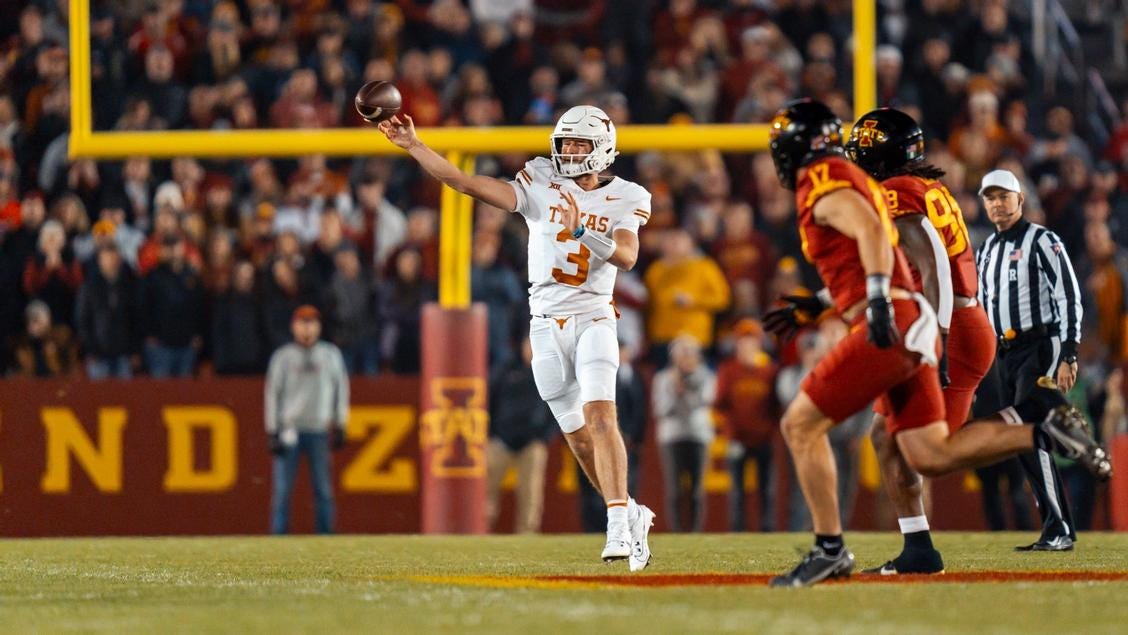Uncovering the Multi-Billion Dollar Industry of College Football
👋 Hi friends, and welcome to Behind the Athletes Newsletter. Every Thursday we cover everything related to the business of sports as well as the performance and health aspects of athletes. Understand how the world of sports works behind the curtains from a business and performance perspective. Whether you are an athlete, a sports enthusiast, or a business professional, you will receive practical lessons that apply to your business and personal life.
Texas A&M University made headlines recently with its decision to fire head football coach Jimbo Fisher, committing to a staggering $75 million severance package. Fisher, who led the team for six years, will receive this record-breaking severance despite a less-than-stellar performance.
The obvious question here is why a university can pay a football coach $75 million as a golden handshake.
Let’s start by understanding the revenue behind college football.
College football in the U.S. is divided into several conferences, each consisting of a group of universities. These conferences play a crucial role in organizing the college football seasons, including schedules, post-season games, and revenue distribution. The five (Power Five) biggest conferences combined did $3.3 billion in revenue in 2022.
The main revenue streams are:
Television Rights: The heartbeat of college football's revenue stream is television rights. For instance, the Big Ten, leading in annual TV revenue, secured a media rights deal worth $8 billion over seven years, or $1.1 billion a year starting in 2023. To put that in comparison the Bundesliga’s media rights are also worth $1.1 billion a year.
Ticket Sales: Ticket sales contribute significantly to the revenue stream. In 2022, the top 10 college football teams by attendance drew over 6 million fans, with ticket revenues often exceeding $40 million for leading programs. The University of Michigan, for instance, reported about $45.1 million in ticket sales in 2021.
Merchandising and Licensing: Merchandise sales, including apparel and memorabilia, further bolster revenue. Licensing deals for college football teams can generate millions. For example, the University of Texas at Austin earned approximately $10.1 million in licensing royalties in 2021.
So there is a lot of money to be made in college football but the expenditures keep rising as well. Here are some recent examples:
Recruiting: The University of Texas at Austin spent nearly $280.000 on a recruiting weekend for prized football prospect Arch Manning and eight other recruits. This extravagant spending included five-star accommodations, virtually all-you-can-eat fare, a full spread in their rooms at the Four Seasons Austin, and much more.
Coaching Salaries: Top-tier college football coaches command high salaries, sometimes exceeding that of professional coaches. In 2023, the average salary for a head coach in a major conference was around $4.5 million, with the highest reaching over $9 million annually.
Facilities and Operations: College football facilities and stadiums are huge and often rival the ones of NFL teams. For example, the largest college football stadium in the US belongs to the University of Michigan with seats for 107.000 fans. These huge facilities need to be maintained and updated as evidenced by the recent announcement of the $450 million upgrade the University of Nebraska’s memorial stadium will get.
Looking at these staggering numbers, college sports (especially college football) are a real business and revenue generation machine for colleges.
Texas Athletics, for example, generates more than $200 million in total revenue through ticket sales, donations, merchandising, and television contracts. This makes it self-sustaining, generating revenue for the university’s academic endeavors without relying on student fees or state sources. In the FY 2019-20, Texas Athletics even transferred approximately $10.7 million back to the university.
The ripple effect of a successful football program extends beyond the field. Schools like Clemson have witnessed a surge in applications and enrollment following their football success, a phenomenon known as the "Flutie Effect." A study by Douglas J. Chung in the Harvard Business Review indicated that when a school goes from being mediocre to great on the football field, applications can increase by as much as 18.7%.
The intersection of athletics, academics, and finance in college football creates a unique and powerful ecosystem. From multi-million dollar television deals to impacts on university admissions and local economies, college football is a multifaceted enterprise that continues to evolve and thrive.





